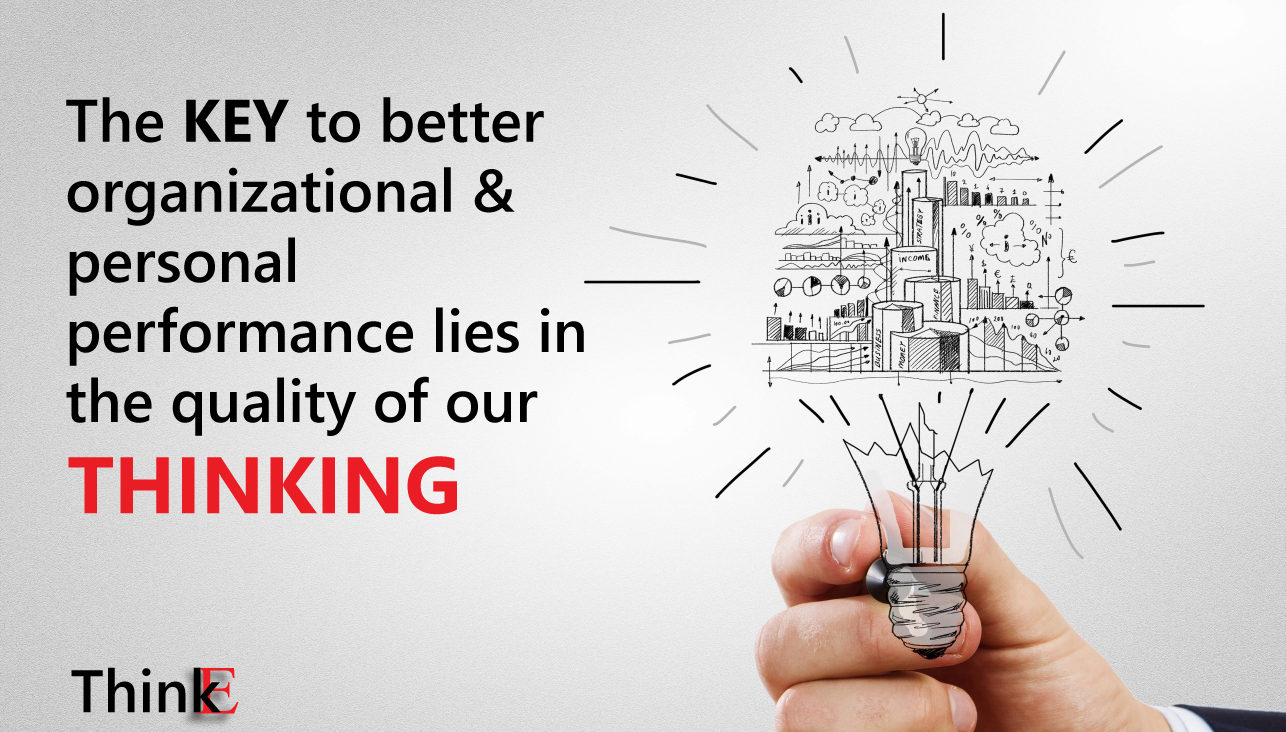A man who was traveling came upon a farmer working in his field and asked him what the people in the next village were like. The farmer asked “What were the people like in the last village you visited?” The man responded “They were kind, friendly, generous, great people.” “You’ll find the people in the next village are the same,” said the farmer.
Another man who was traveling to the same village came up to the same farmer somewhat later and asked him what the people in the next village were like. Again the farmer asked “What were the people like in the last village you visited?” The second man responded, “They were rude, unfriendly, dishonest people.” “You’ll find the people in the next village are the same,” said the farmer.
Our thinking or mindset shapes what we see, and as a result what we experience. The two travelers saw and experienced the same village differently because the way they “think” was different. Our thinking shapes our perception and how we approach people and problems. This eventually affects the results we get and whether we succeed or fail in what we set out to do.
The Singapore government is constantly asking, how can we raise our people’s productivity? What would make an individual person like me be more productive? I would need to do things differently from before, such as doing things faster, producing more or implementing new improvement ideas. But how would I do things differently? The answer lies in our minds, i.e. I need to be able to think differently. So, in order to improve productivity, we need to invest in improving our thinking abilities.
How can we improve our thinking capacity? Here are 3 important ways or frames of thinking that we can all cultivate to strengthen our thinking capacity:
Meta-thinking – Meta thinking is simply being aware of our own thinking. Meta thinking is self-awareness or mindfulness. Meta thinking helps us become more aware of our own thoughts. Have you ever noticed the thoughts you have in your head? The thought could be “I need to do this or that” or “Why is he saying that”, or “Why did she not share that information with me first?” If we are a lot more aware of these thoughts, we are able to stop and pause, choose to put it aside and come back to it later, or choose to respond immediately. Greater awareness allows us greater choices in responding to whatever it is we are thinking about. One of the ways to cultivate mindfulness is to do a simple 5 or 10 minute “meditation” where we focus on our own breathing. Another practice that we can develop is the act of mindful reflection, where we take some time in the weekend to write down our thoughts in response to questions like “What did I learn this week? or What could I have done better this week?”
Collaborative thinking – When we think collaboratively, we will be thinking about how to involve others in what we’re doing and in sharing information with other people. When we adopt collaborative thinking, we will look for people to think with us, instead of just thinking about issues on our own. Look for thinking partners in your colleagues, spouse or friends to help you bounce ideas or think through problems. While some people prefer to think alone, adopting this mode of thinking opens you to the thoughts and ideas of others, which may strengthen your own initial idea. Brainstorming is an example of a thinking tool that gets us to think in a collaborative way.
Thinking from multiple perspectives – this mode of thinking gets us to look at an issue or idea from the eyes of different people. It’s about putting ourselves in the shoes of our stakeholders. The stakeholders could be the different people in your situation that would be impacted or has an interest in your idea or issue. For example, if you are working on a task or project, your stakeholders could be your boss, your boss’s boss, your customer (if you deal with customers), your supplier/vendor and your colleagues. Thinking from their perspective will help you understand their interests and motivations and allow you to work on your issue/idea to address their needs and interests. It strengthens your overall idea or subsequent execution of that idea. Another example is the design thinking process – it’s a process that emphasizes the perspective of the customer or end user as the starting point before embarking on any design of the solution.
Stephen Covey said that “All things are created twice; first mentally; then physically”. If we improve our thinking, it will ultimately result in improved outcomes. There are many methods to improve our thinking capacity – learn to cultivate them to achieve better outcomes for yourself, personally and professionally.
Brief Author Profile
Chris is the founder and managing director of THINKE LLP, a company that specializes in helping individuals and organizations create transformational shifts in thinking and effectiveness. His passion and purpose is to help people be more effective, motivated and fulfilled in what they do. He also moderates the facebook group “The Thinking Executive” at https://www.facebook.com/groups/thinkexec
Chris can be reached at thinke001@gmail.com or chrischew@thinke.co

